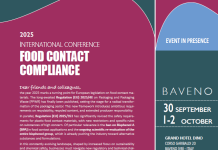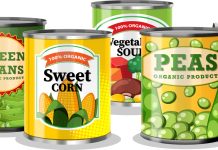 The carbon footprint was analysed on the base of common wheat flour. Bread is a basic food, consumed in large quantities in Italy, and generally considered a product having a low environmental impact. However, the values of carbon footprint (CF) available in the literature cover a rather wide range, from a minimum of about 250 to a maximum of 2300 g of CO2/kg. This depends on the different hypotheses made in the analysis phase. In a recent study conducted by an Italian researcher (Moresi, 2016), the CF value of the industrial production of wheat bread has been analysed, using the official method recognized by the Carbon Trust (PAS 2050). In particular, the product was considered to be in the format of a 1kg loaf, packed in micro-perforated polyethylene pouches, assuming that the food is intended for final consumers. Various emissions factors have been analysed, with respect to emission factors for nitrogen-based fertilization, straw waste management, wheat, flour and bread chains. Finally, the sensitivity of CF was analysed with respect to characterisation factors of green house gases deriving from the addition of fertilizer to the soil. On the basis of the analysis, the value of CF is equal to about 0.75 kg of CO2 per kg of product, in line with the data available in the literature. The agricultural stage was identified as the primary hotspot, followed by the transport phase if the grains are entirely produced in EU countries, and the third hotspot was bread processing. The contributions of these phases are reversed if the grains are produced locally. The minimization of the impact of the first hotspot would make the implementation of more effective techniques for the cultivation of wheat a priority. In conclusion, the author states that more research is still needed to refine the estimated direct and indirect N2O emissions from managed soils that are still suffering from a wide uncertainty.
The carbon footprint was analysed on the base of common wheat flour. Bread is a basic food, consumed in large quantities in Italy, and generally considered a product having a low environmental impact. However, the values of carbon footprint (CF) available in the literature cover a rather wide range, from a minimum of about 250 to a maximum of 2300 g of CO2/kg. This depends on the different hypotheses made in the analysis phase. In a recent study conducted by an Italian researcher (Moresi, 2016), the CF value of the industrial production of wheat bread has been analysed, using the official method recognized by the Carbon Trust (PAS 2050). In particular, the product was considered to be in the format of a 1kg loaf, packed in micro-perforated polyethylene pouches, assuming that the food is intended for final consumers. Various emissions factors have been analysed, with respect to emission factors for nitrogen-based fertilization, straw waste management, wheat, flour and bread chains. Finally, the sensitivity of CF was analysed with respect to characterisation factors of green house gases deriving from the addition of fertilizer to the soil. On the basis of the analysis, the value of CF is equal to about 0.75 kg of CO2 per kg of product, in line with the data available in the literature. The agricultural stage was identified as the primary hotspot, followed by the transport phase if the grains are entirely produced in EU countries, and the third hotspot was bread processing. The contributions of these phases are reversed if the grains are produced locally. The minimization of the impact of the first hotspot would make the implementation of more effective techniques for the cultivation of wheat a priority. In conclusion, the author states that more research is still needed to refine the estimated direct and indirect N2O emissions from managed soils that are still suffering from a wide uncertainty.
Technological innovation and sustainability in the industrial production of bread. Bread has a very ancient history, but its industrial production dates back to the last century, when the first kneading machines and ovens made their appearance. Since then, continuous technological innovation has favoured the development and spreading of different types of product. A recent study carried out by an Italian company of the sector (Morbarigazzi, 2016), discusses some initiatives aimed at improving both bread quality and the sustainability of its production. Malnutrition phenomena, by excess or by default, and the new nutritional knowledge field have led to the development of products with certain health benefits. As for instance, formulations with a reduced salt content, and others with a high fiber content (especially common ones, obtained through the use of certain fractions of bran such as aleurone). In the area of sustainability, instead, various initiatives provide for the implementation of the LCA model (i.e. life-cycle analysis) for assessing the environmental impact of industrial bread production. The results highlight the importance of the raw materials supply chain, and the identification of possible areas of improvement. In this context, a particularly important feature is the technological innovation of cultivation systems. Finally, from the point of view of quality, the author argues that the use of flours with certain gluten properties, together with the right amount of other ingredients (in particular yeast, sugar, and vegetable oil) is essential to obtain a good quality product. The implementation of GMP regulations (i.e. Good Manufacturing Practices) guarantees the final result.
References Moresi, Accademia dei Georgofili, Giornata di Studio, Viterbo, 18 March 2016; Morbarigazzi, Accademia dei Georgofili, Giornata di Studio, Viterbo, 18 March 2016



